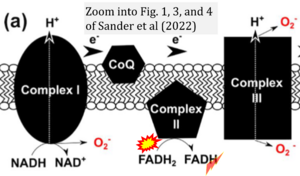Sander 2022 Rev Med Virol
| Sander WJ, Fourie C, Sabiu S, O'Neill FH, Pohl CH, O'Neill HG (2022) Reactive oxygen species as potential antiviral targets. Rev Med Virol 32:e2240. https://doi.org/10.1002/rmv.2240 |
Sander WJ, Fourie C, Sabiu S, O'Neill FH, Pohl CH, O'Neill HG (2022) Rev Med Virol
Abstract: Reactive oxygen species (ROS) are by-products of cellular metabolism and can be either beneficial, at low levels, or deleterious, at high levels, to the cell. It is known that several viral infections can increase oxidative stress, which is mainly facilitated by viral-induced imbalances in the antioxidant defence mechanisms of the cell. While the exact role of ROS in certain viral infections (adenovirus and dengue virus) remains unknown, other viruses can use ROS for enhancement of pathogenesis (SARS coronavirus and rabies virus) or replication (rhinovirus, West Nile virus and vesicular stomatitis virus) or both (hepatitis C virus, human immunodeficiency virus and influenza virus). While several viral proteins (mainly for hepatitis C and human immunodeficiency virus) have been identified to play a role in ROS formation, most mediators of viral ROS modulation are yet to be elucidated. Treatment of viral infections, including hepatitis C virus, human immunodeficiency virus and influenza virus, with ROS inhibitors has shown a decrease in both pathogenesis and viral replication both in vitro and in animal models. Clinical studies indicating the potential for targeting ROS-producing pathways as possible broad-spectrum antiviral targets should be evaluated in randomized controlled trials.
• Bioblast editor: Gnaiger E
Correction: FADH2 and Complex II
- FADH2 is shown as the substrate feeding electrons into Complex II (CII). This is wrong and requires correction - for details see Gnaiger (2024).
- Gnaiger E (2024) Complex II ambiguities ― FADH2 in the electron transfer system. J Biol Chem 300:105470. https://doi.org/10.1016/j.jbc.2023.105470 - »Bioblast link«


